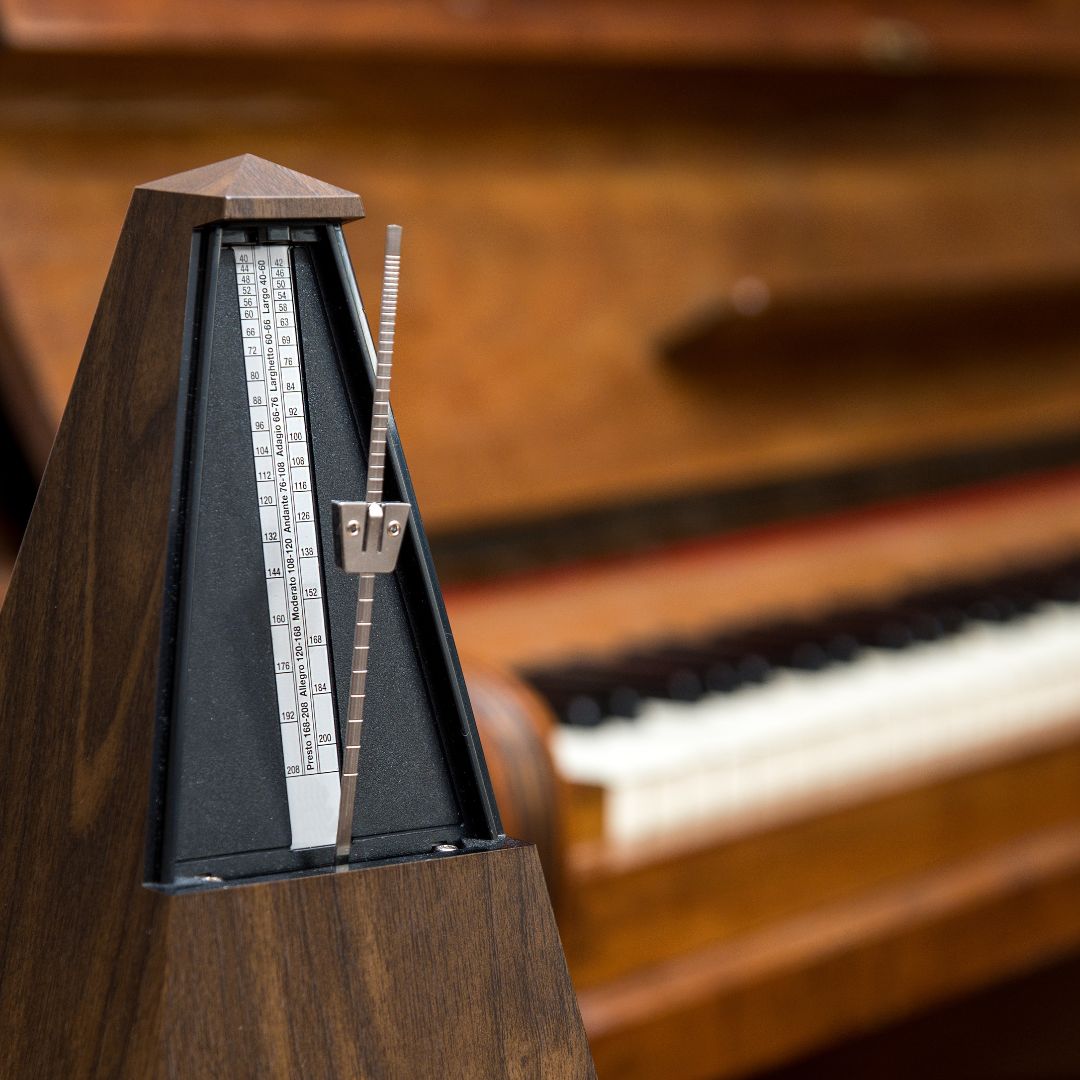hythm is one of the things that makes music so much fun! Rhythm makes you want to dance. It brings the music to life! Melodies and harmonies, dynamics (loud and quiet) are part of the equation too, but in the jazz world at least, I’ve heard it said that “rhythm is king.”
Humans have a natural sense of rhythm. We all have a heartbeat. We’re drawn in by rhythmic patterns. Little babies start rocking back and forth when they hear a good rhythm. People tap their toes or dance to music because of the rhythm.
Like all of the other parts of music, music is best ingrained when you’re very young. How, though, do you teach good rhythm to your baby when you hardly understand it yourself? Since good rhythm is often neglected in music training, even adult musicians have a hard time passing it on.

One of my favorite jazz pianists, Hans Brehmer from my jazz singing days, told me “your metronome is your best friend.” Best friendships are built by spending time together.
Playing some fun rhythm games with a metronome is a great way to instill a strong sense of time, the foundation of rhythm. Unfortunately, a lot of students don’t like metronomes because they’re introduced too late, when rhythmic sense has already been hijacked by the stress of playing the correct notes with the correct fingers.

A good way to help your infant, toddler or preschooler to avoid this trap is to get a simple, inexpensive metronome and let your child play with it. Make sure you wait to hand it over once you’re sure they won’t put it in their mouth. Before that, you can control it. Learn how to change the tempo from slow to fast and in between, and learn how to change the beats per measure. In case this is jibberish to you, I’ve made a little video for you to help you understand rhythm, beat and tempo.

You can get a free metronome app on your phone, which I use often, and recommend, but most people don’t want to hand their open phone to their small child, which I get.
A simple, inexpensive metronome is a great alternative, and while it is a useful tool, little kids see it as a toy (secretly we know it has a ton of benefit! Also, who wouldn’t want to get one in their stocking??)

I found this simple and inexpensive metronome at Sweetwater.com. Of course you can choose any that you like, and please don’t hesitate to use other sources. Some of my criteria are:
- Simple – too many bells and whistles can make it confusing.
- Changeable tempo
- Changeable beats per measure
- Volume control
- Speaker jack (optional)
You don’t need a tuner (which comes with some metronomes and can be useful in other circumstances, but confusing for a small child) and I think dials are more prone to breaking than buttons.
If it turns out your child doesn’t want to play with a metronome, don’t worry. Not all kids like the same things at the same time. You can introduce a metronome into the practice routine by, you guessed it, using it yourself when you practice!
Next week I’ll give you some really fun games to play with your kids, and with your new metronome!






Leave A Comment